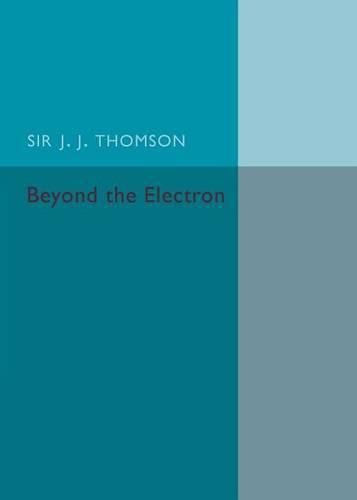Readings Newsletter
Become a Readings Member to make your shopping experience even easier.
Sign in or sign up for free!
You’re not far away from qualifying for FREE standard shipping within Australia
You’ve qualified for FREE standard shipping within Australia
The cart is loading…






Sir Joseph John Thomson was an English physicist and Nobel Prize winner and is credited with the discovery and identification of the electron and with the discovery of the first subatomic particle. Thomson is also credited with finding the first evidence for isotopes of a stable (non-radioactive) element in 1913, as part of his exploration into the composition of canal rays (positive ions). Originally published in 1928, this book presents the first of a series of Founders’ Memorial Lectures, delivered at Girton College on March 3rd 1928. The lecture discusses, debates and deliberates the many discoveries of modern physics as well as the structure of the universe, and addresses both the professional scientific worker, but also students with a non-scientific background. This fascinating, insightful and ground breaking lecture will be of considerable value to scholars of physics as well as to anyone with an interest in the history of science.
$9.00 standard shipping within Australia
FREE standard shipping within Australia for orders over $100.00
Express & International shipping calculated at checkout
Sir Joseph John Thomson was an English physicist and Nobel Prize winner and is credited with the discovery and identification of the electron and with the discovery of the first subatomic particle. Thomson is also credited with finding the first evidence for isotopes of a stable (non-radioactive) element in 1913, as part of his exploration into the composition of canal rays (positive ions). Originally published in 1928, this book presents the first of a series of Founders’ Memorial Lectures, delivered at Girton College on March 3rd 1928. The lecture discusses, debates and deliberates the many discoveries of modern physics as well as the structure of the universe, and addresses both the professional scientific worker, but also students with a non-scientific background. This fascinating, insightful and ground breaking lecture will be of considerable value to scholars of physics as well as to anyone with an interest in the history of science.